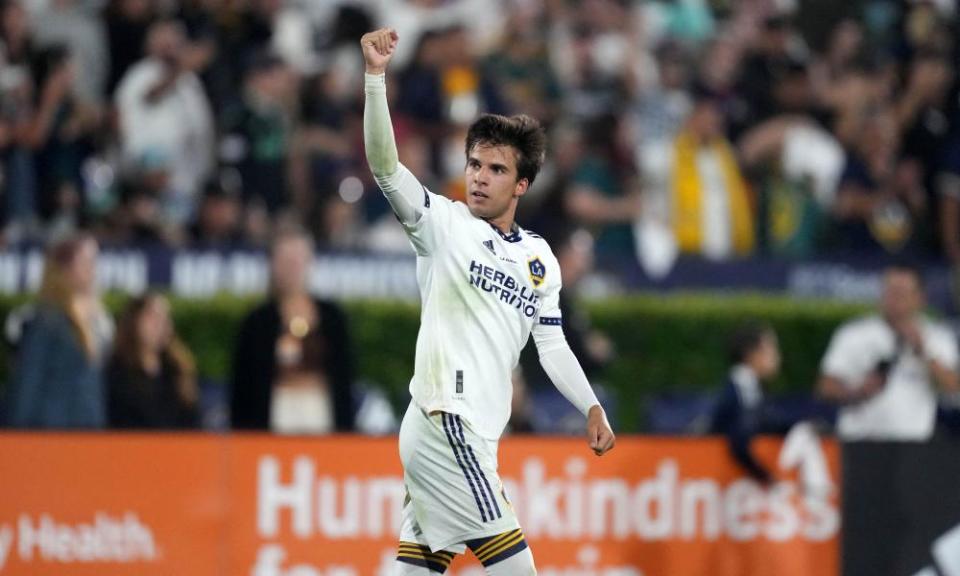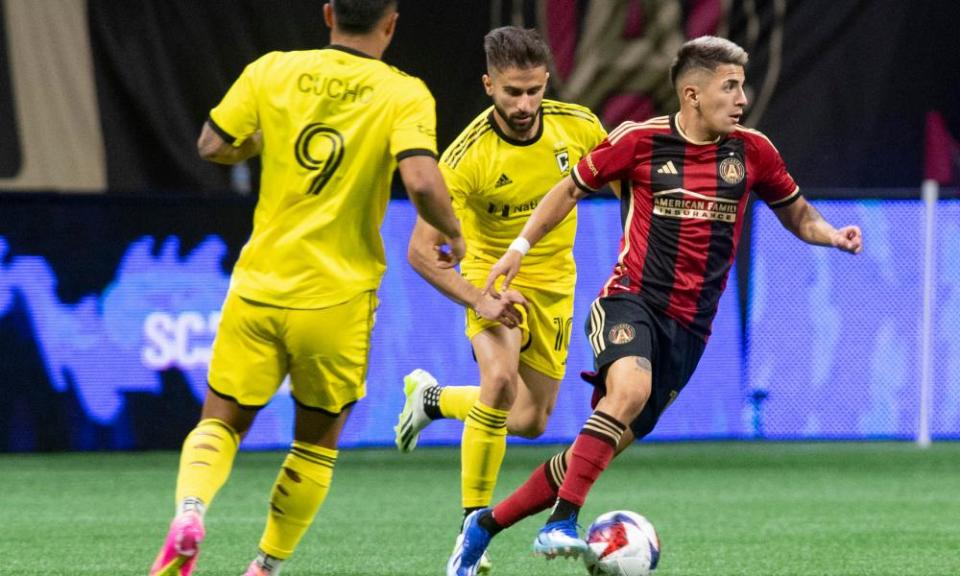Products You May Like

For most of the league’s existence, high-profile players in MLS have tended to fit into one of two categories: young prospects, from home or abroad, who have been developed in-house, and established stars who have moved Stateside to wind down their careers.
In recent seasons, though, a look across MLS’s most consistent high-performing players reveals a third class of imports – a group of mid-prime stars who have moved to North America with the aim of kickstarting stalled careers.
Riqui Puig was one of the jewels of Barcelona’s La Masia academy but struggled to break into the first team at Camp Nou. The 24-year-old is now thriving with LA Galaxy, with seven goals and four assists in MLS this season. Scottish attacking midfielder Ryan Gauld first generated widespread buzz as a young player at Sporting CP, but after a string of uneventful loan moves, the 27-year-old is finally fulfilling his potential with the Vancouver Whitecaps, where he’s been a revelation since joining the club in 2021.
Related: By surfing the playoff expansion trend, MLS has devalued the regular season
It’s a similar story for New England Revolution’s Carles Gil, who struggled to meet expectations at Aston Villa in the Premier League. The 30-year-old has been one of the best forwards in MLS over the last five seasons. The likes of former Germany under-21 standout Hany Mukhtar at Nashville SC, Columbus Crew’s Cucho Hernandez and Sebastian Driussi of Austin FC have followed similar trajectories to MLS stardom.
One of the reasons cited for the growth of this burgeoning category of import is that, until recently, such players did not consider a move to North America. Now, though, thanks to infrastructural advancement and the growth of the sport among the US public, MLS franchises can offer an all-encompassing soccer environment on par with the European clubs to which these players might previously have been more attracted.
“We have a league and product on the field that is now strongly established and is appealing to both young potential prospects and senior pros who are mid-career,” says Neil McGuinness, the director of player scouting and recruitment at Columbus Crew, “which has made the market so much more open and diverse than it was back in the 90s.”
Lucy Rushton, DC United’s former general manager, agrees. “The stadiums and the training facilities that these clubs have are second to none,” she says. “What we have now in MLS – and what we probably didn’t have seven years ago – is being able to offer players incredible facilities, incredible support staff and an environment where they can grow and develop. For any player, that’s of fundamental importance. Immediately, that’s made MLS more attractive to people.”
What’s more, the sport’s blossoming popularity, combined with MLS’s Designated Player rule – which allows clubs to exceed the salary cap to offer higher wages to a selected player – means prospective transfer targets can been lured to the league with a financial package and a level of prospective stardom previously attainable only in Europe.
“The DP contract is a massive selling point for MLS clubs with any player,” Rushton says. “And the club can pay them whatever they want. The ability to earn good money is high. It might be that they weren’t going to earn that kind of money in Europe. It’s a big allure to a player. Clubs are saying, ‘You’re going to be our marquee player. We’re going to brand our club around you. You’re going to be the face of the club.’
five or 10 years ago, those players would not consider MLS for a second
“More and more players in that stage of their career are going to want to come to MLS. They’re seeing other players go there and becoming the stars that they are. The league is becoming more attractive to that pool of players, whereas five or 10 years ago, those players would not consider MLS for a second.”

And it’s a two-way street. These increasingly attainable mid-career stars are as attractive to MLS clubs as the league is to them. They represent a safer method of acquiring a star-level player than the hit-and-miss process of youth development, while also offering more longevity and upside than the late-career megastars of years past.
“We are at a stage now within MLS where its competitive across the board and every team is out to get the best possible players they can recruit,” McGuinness says. “So from a brand-name or resale point of view, that would fall secondary to getting players that you feel can improve the standard of your squad, regardless of position or age.”
Rushton points to players at newer MLS franchises as examples. “If you look at Driussi at Austin or Mukhtar at Nashville, these guys have become absolute superstars for their club,” says Rushton. “And there are clubs now who’d pay big money for those players. MLS as a model has definitely gone away from the whole ‘retirement league’ tagline it had a couple of years ago. There was a real culture shift among clubs in MLS to try to do that. The league is beyond that. Messi has come here and been absolutely phenomenal, but Messi is Messi. If you look beyond that, the league as a whole has veered away from that older kind of player.
Related: Apple’s belligerently dull Messi doc shows football’s change from sport to content | Aaron Timms
“If they come here, reinvent themselves and then get sold back to Europe, all these other players are going to see that as a mechanism for themselves to do it, so it encourages future players to do it.”
But therein lies the approaching quandary for MLS clubs. Just as the league wishes to move away from its ‘retirement home’ reputation, it also does not want to be seen solely as a stepping stone for this growing group of mid-career stars.
“MLS is in a place now where we want to keep the best players,” Rushton says. “I’m not sure if these players now are actively looking to go abroad or their clubs are actively looking to sell them. We want to keep the best players in the league because we want to grow MLS. Among the clubs and the GMs, there’s a desire to work collectively to improve the league and make sure that it continues to grow.”
This new breed of import has the potential to be a sustainable seam for US soccer to mine in search of star players. The success the likes of Gauld, Puig, Driussi and Co have enjoyed since arriving in MLS is testament to the league’s rising standards of play and infrastructure and the ambition of its clubs. Attracting them across the Atlantic was step one, though. Keeping hold of them is the next frontier.
